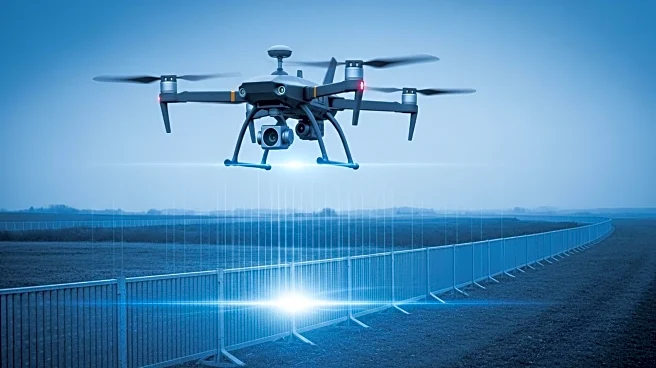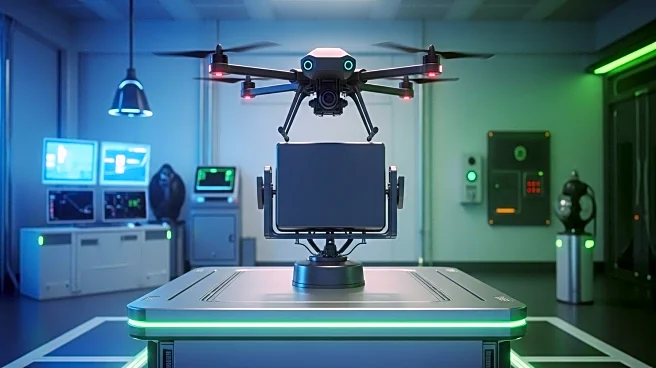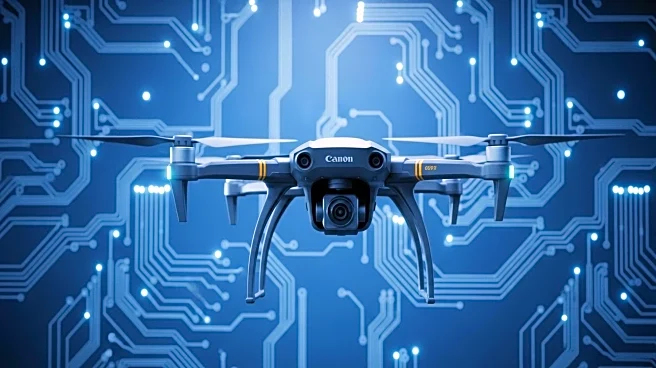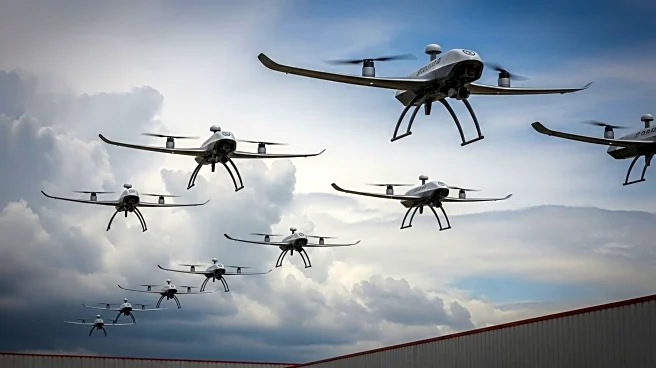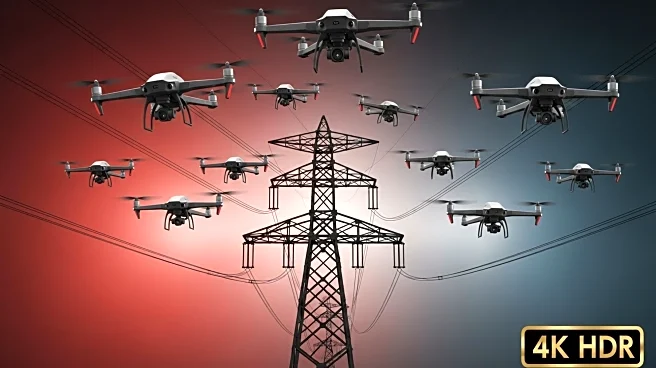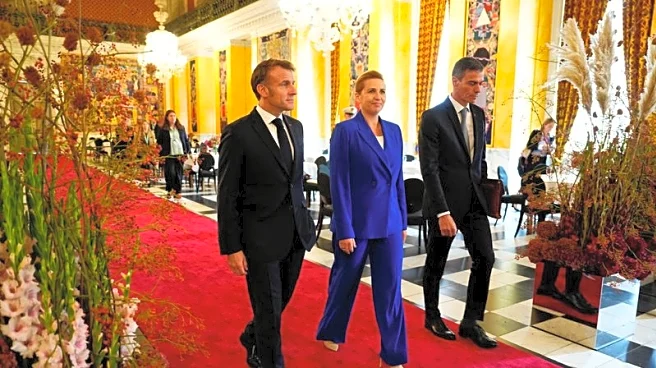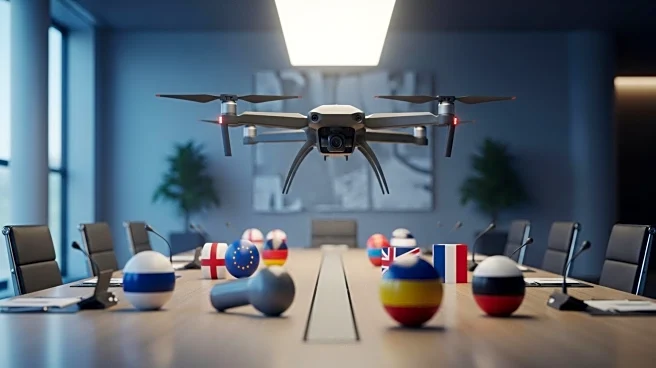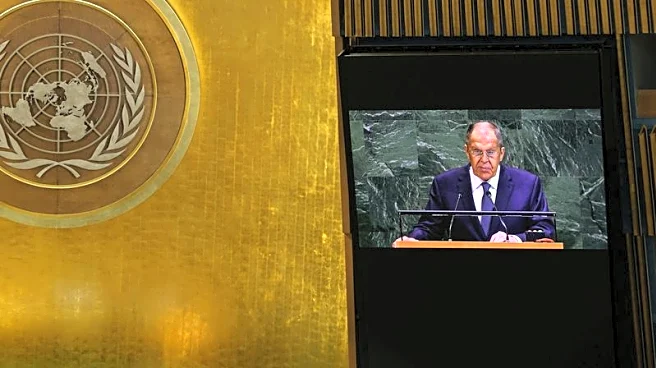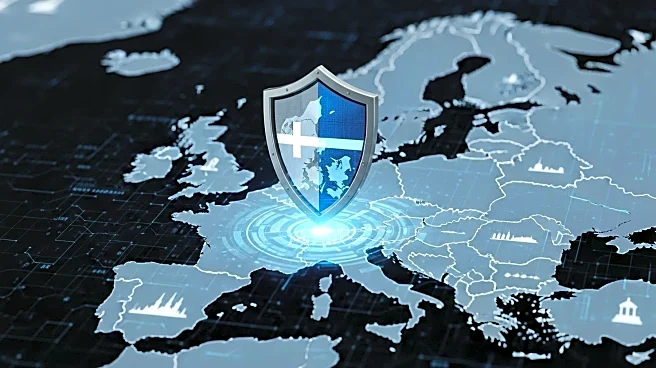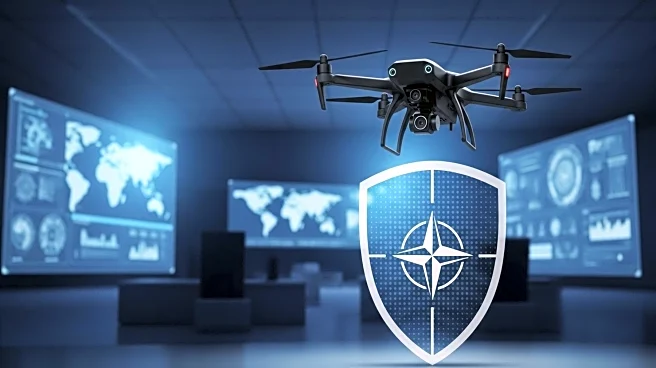What's Happening?
The European Union has embarked on a significant defense initiative to establish a 'drone wall' across Europe in response to increasing Russian drone incursions. This project aims to create a comprehensive network of sensors, artificial intelligence software, jammers, and cost-effective missiles to counter small-drone attacks. Estonia, a key player in this initiative, has allocated €2.66 billion from the EU to support companies developing drone defense technologies. Estonian startups are collaborating with Ukrainian commanders to refine these technologies, drawing on frontline experiences. The project includes partnerships with companies like DefSecIntel, which is developing mobile and stationary sensors to detect drones, and Milrem Robotics, which is adapting robotic vehicles for drone defense roles. The initiative is part of a broader NATO effort, known as Eastern Shield, to enhance defense capabilities on the eastern flank.
Why It's Important?
The development of a 'drone wall' is crucial for European security, particularly for countries bordering Russia, such as Estonia. The project addresses the growing threat of drone incursions, which have become a significant concern for NATO and EU member states. By enhancing drone detection and interception capabilities, the initiative aims to protect critical infrastructure and civilian populations from potential attacks. The collaboration between EU countries and NATO ensures that the defense systems are interoperable and effective against high-volume drone threats. This project also highlights the strategic importance of technological innovation in modern warfare, as countries seek to counter new forms of aggression. The success of this initiative could set a precedent for future defense collaborations within the EU and NATO.
What's Next?
The EU and NATO are working closely to expedite the testing and deployment of new drone defense technologies. Rapid testing and experimentation are underway to ensure that the systems are field-ready within weeks, not months. The EU has committed to developing a roadmap to outline funding and implementation strategies for the drone wall. However, there are challenges, including disagreements among EU members on the timeline and management of the project. Some officials express urgency, while others believe the network may take several years to complete. The ongoing coordination between EU and NATO will be crucial in overcoming these challenges and ensuring the timely deployment of effective drone defense systems.
Beyond the Headlines
The 'drone wall' project underscores the evolving nature of warfare, where technological advancements play a pivotal role in national defense strategies. The initiative reflects a shift towards autonomous and AI-driven defense systems, which could redefine military tactics and capabilities. Additionally, the project highlights the importance of international collaboration in addressing shared security threats. The involvement of tech startups in defense projects also points to a growing trend of public-private partnerships in the defense sector. As the project progresses, it may influence defense policies and spending priorities across Europe, potentially leading to increased investment in similar technologies worldwide.

